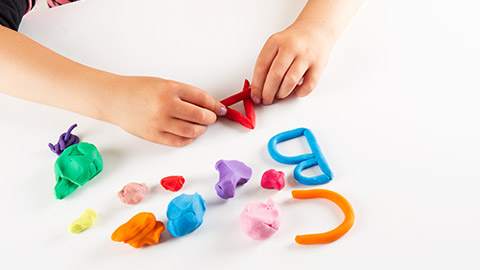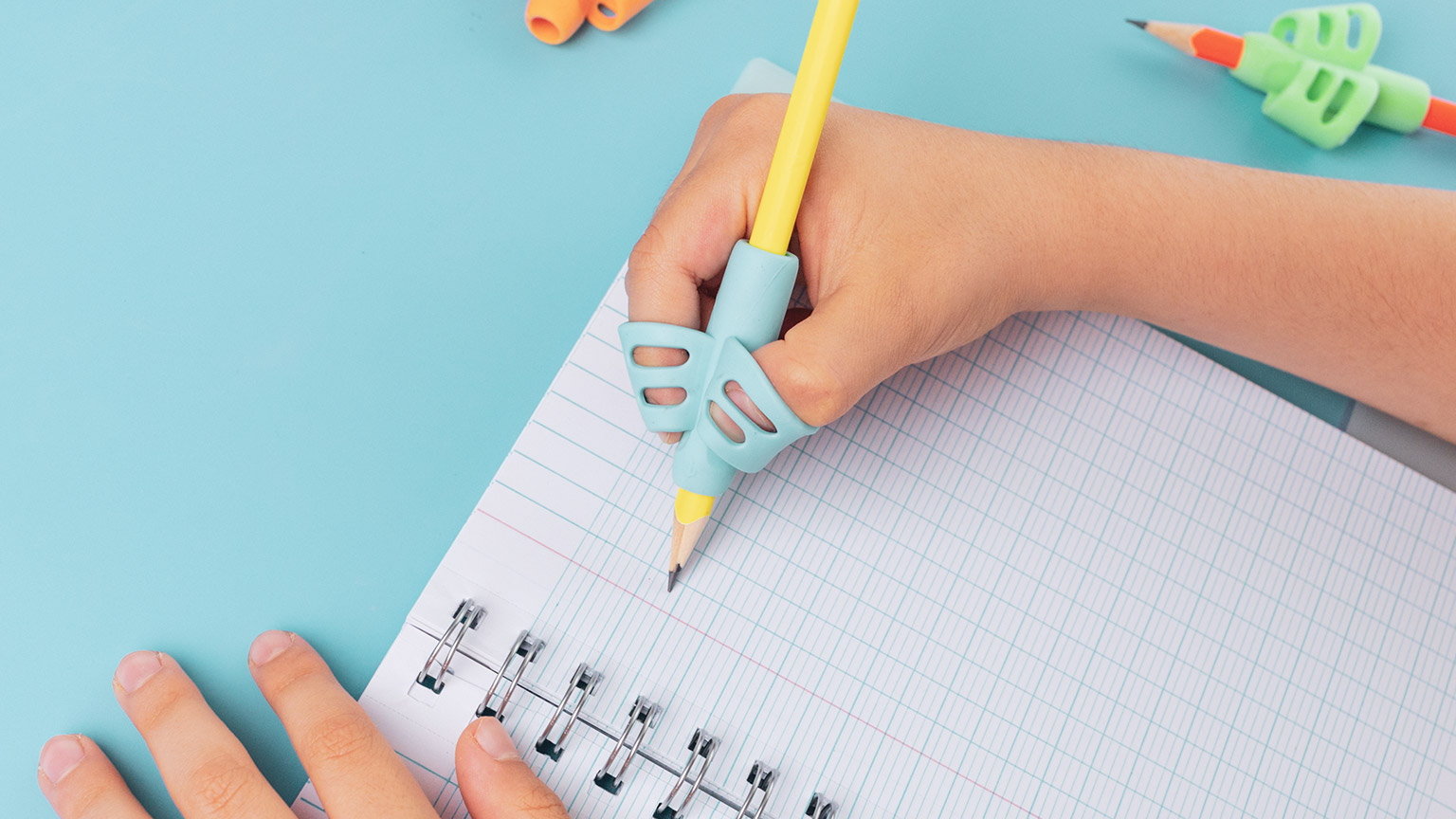Creating effective intervention plans for individuals with dysgraphia is crucial to support their challenges in written expression. Dysgraphia, a learning disorder affecting handwriting, spelling, and overall written communication, requires a tailored approach at different intervention tiers.
Here's an overview of what interventions might look like at Tiers 1, 2, and 3.
Tier 1: Universal Interventions
Recall Tier 1 interventions are universal strategies implemented for all students to support their learning. These strategies are typically part of general classroom practices and may include:
Explicit Instruction in Handwriting
Provide explicit instruction in handwriting skills, including letter formation, sizing, spacing, and alignment. Use multisensory approaches such as tracing letters in sand or shaving cream and provide ample practice opportunities. Examples of specific activities that could be used at this level include:
- Handwriting Warm-Up: Brief activities practicing letter formation using different mediums.
- Handwriting Stations: Rotating stations for practicing handwriting skills using tactile materials.
Use of Assistive Technology
Introduce assistive technology tools such as speech-to-text software, word prediction programmes, or specialised keyboards to support students with dysgraphia in expressing their ideas without the need for extensive handwriting. Examples of specific activities that could be used at this level include:
- Introduction to Speech-to-Text: Students dictate short passages to practice generating written content.
- Word Prediction Activities: Students use word prediction software to assist in generating ideas.
Environmental Modifications
Ensure the classroom environment is conducive to learning, with ergonomic seating, proper lighting, and reduced distractions to help students focus on writing tasks. Examples include:
- Classroom Design Project: Students brainstorm and implement modifications for a conducive learning environment.
- Distraction-Free Writing Zones: Designated "quiet zones" within the classroom for focused writing tasks.
Alternative Writing Tools
Offer alternative writing tools such as adapted grips, slant boards, or pencil grips to support proper hand positioning and control during writing activities. Examples include:
- Ergonomic Seating Exploration: Students explore different seating options for writing activities.
- Pencil Grip Experiment: Trying out various pencil grips to improve grip and control.
Modified Assignments
Provide modified assignments when necessary, such as allowing extra time for written tasks or allowing students to demonstrate understanding through oral presentations or visual aids. Examples of specific activities that could be used at this level include:
- Flexible Writing Formats: Students choose alternative formats like multimedia presentations or graphic organisers.
- Extended Time on Writing Tasks: Providing extra time for completing writing assignments.
Tier 2: Targeted Interventions
Tier 2 interventions are targeted interventions provided to students who require additional support beyond universal strategies. These interventions may include:
Small Group Instruction
Offer small group instruction focusing on specific handwriting skills or strategies tailored to the needs of students with dysgraphia. Examples of specific activities that could be used at this level include:
- Handwriting Boot Camp: Focus on specific skills like letter formation, size consistency, and spacing in small group sessions.
- Writing Fluency Circles: Students share their writing, provide peer feedback, and practice revision strategies in small groups.
Individualised Accommodations
Provide individualised accommodations such as preferential seating, extended time on assessments, or use of graphic organisers to help students organise their thoughts before writing. Examples include:
- Personalised Graphic Organisers: Create templates tailored to each student's writing needs for brainstorming, outlining, and structuring.
- Extended Time and Breaks: Allow additional time and breaks during writing tasks to reduce frustration and fatigue.
Sensory Integration Activities

Incorporate sensory integration activities into the curriculum to help improve fine motor skills and hand-eye coordination, such as finger painting, playdough activities, or using manipulatives. Examples of specific activities that could be used at this level include:
- Playdough Letter Sculpting: Sculpt letters, words, or sentences using playdough to improve fine motor control and letter formation.
- Sensory Writing Trays: Practice writing in materials like sand, rice, or shaving cream to improve hand-eye coordination.
Peer Tutoring
Implement peer tutoring programmes where students with dysgraphia receive support and guidance from their peers during writing tasks. Examples include:
- Writing Buddies Programme: Pair students with dysgraphia with peer writing buddies for support with brainstorming, editing, and revising.
- Collaborative Writing Projects: Work in pairs or groups to brainstorm ideas and create written pieces together.
Consultation with Specialists
Collaborate with occupational therapists, special education teachers, or other specialists to develop and implement individualised intervention plans for students with dysgraphia. Examples include:
- Occupational Therapy Consultations: Regular assessments and targeted intervention strategies with occupational therapists.
- Special Education Teacher Support: Collaborate on individualised accommodations and supports for consistency across settings.
Tier 3: Intensive Interventions
Tier 3 interventions are intensive, individualised interventions provided to students who require significant support beyond Tier 1 and Tier 2 interventions. These interventions may include:
Individualised Education Plan (IEP)
Develop an IEP specifically addressing the needs of the student with dysgraphia, outlining goals, accommodations, and specialised instruction to support their learning. Examples of specific activities that could be used at this level include:
- Goal-Setting Meetings: Develop SMART goals with students, parents, teachers, and specialists.
- Progress Monitoring and Adjustments: Regularly review and update the IEP based on progress monitoring data.
Intensive Occupational Therapy
Provide intensive occupational therapy targeting specific fine motor skills, hand strength, and coordination needed for handwriting. Examples of specific activities that could be used at this level include:
- Fine Motor Skill Development Sessions: One-on-one sessions focusing on improving hand strength, dexterity, and coordination.
- Handwriting Analysis and Adaptations: Identify weaknesses and develop interventions and adaptations, such as modified tools or seating.
Specialised Writing Instruction
Offer specialised writing instruction focusing on strategies to overcome specific challenges associated with dysgraphia, such as letter reversals, spatial organisation, or sequencing difficulties. Examples of specific activities that could be used at this level include:
- Structured Writing Workshops: Intensive workshops focusing on writing skills and strategies tailored to individual needs.
- Individualised Writing Journals: Practice writing tasks at their own pace with feedback and goal setting.
Parent and Teacher Collaboration
Foster collaboration between parents, teachers, and specialists to ensure consistency in support strategies both at school and home, and to monitor progress and adjust interventions as needed. Examples of specific activities that could be used at this level include:
- Parent Education Workshops: Workshops for parents to learn about dysgraphia and support strategies at home.
- Teacher Training: Professional development for teachers to support students with dysgraphia effectively in the classroom.
The link below will take you to a study that looked at whether an eight-week programme could help high school boys with dysgraphia. The programme was designed to help with two types of dysgraphia: dyslexic dysgraphia and motor dysgraphia and included different activities like talking about writing, doing exercises for big and small movements, learning about the writing process, and talking about how they think about writing.
The entire study makes interesting reading; however, you should focus on the section that talks about two different approaches to helping students with dysgraphia - Work-Through Strategies and Work-Around Strategies.
Reading
Dysgraphia intervention: a mixed-methods examination of a dyslexic dysgraphia and motor dysgraphia intervention
Duration: 10 minutes
Pre-Read Question
What do you understand by the concepts of "Work-Through Strategies" and "Work-Around Strategies" in the context of intervention methods?
Reading
Read pages 24-28 of this article: Dysgraphia intervention
Post-Read Task
Answer the questions that follow about the two approaches.
Case Study - Dysgraphia Awareness

Imagine you are a primary school teacher with a student named Taylor diagnosed with dysgraphia. Taylor struggles with illegible handwriting, difficulty with spelling, and a slow writing pace.
Tier 1 (UDL): Classroom-Wide Strategies
- Identify three specific strategies to promote dysgraphia awareness in the classroom. Consider visual aids, discussions, or activities that foster understanding and empathy among all students.
- Explain how these strategies create an inclusive environment, benefiting not only Taylor but also fostering a supportive atmosphere for all students.
Tier 2 (Targeted Interventions): Small Group Activities
- Devise a small group activity aimed at improving Taylor's handwriting legibility and spelling skills.
- Provide details on how this activity would be structured, including materials/resources needed, and how it targets Taylor's specific difficulties.
Tier 3 (Individualised Support): Personalised Writing Plan
- Create an individualised writing plan for Taylor, outlining specific strategies and tools to enhance overall written expression.
- Detail how you would collaborate with other educators or specialists to implement this plan effectively.
